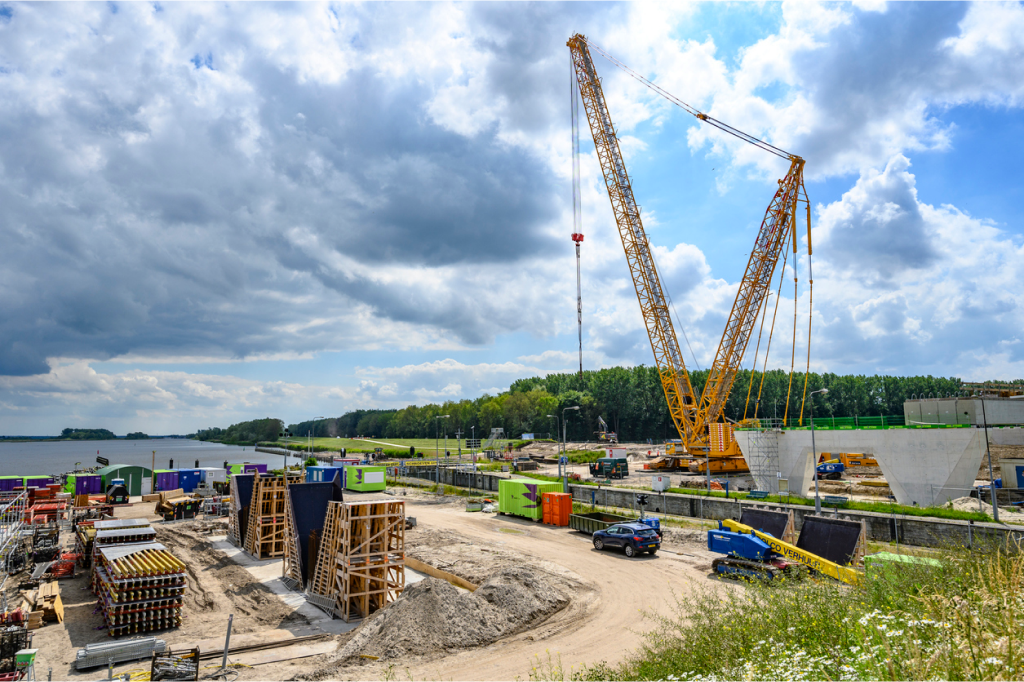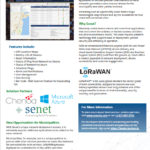
Asset Tracking
Wirelessly track the location and condition of assets, inventory, and goods in transit, outdoors, and inside without manual intervention
Senet provides public LoRaWAN network connectivity plans, private networks, and cloud-based network and device management for solution providers and enterprises needing to locate assets and ensure goods are transported, received, and delivered on time and in proper condition. Offering long-range communication with minimal power consumption, LoRaWAN not only enhances real-time tracking but does so with a compellingly lower total cost of ownership.
The Power of IoT for Asset Tracking
All too often, tracking solutions are over-designed, which unnecessarily increases costs and adds complexity to the service delivery process. However, with recent advancements in Low Power Wide Area Networks (LPWANs) and multiprotocol, multi-purpose devices capable of reporting location and environmental data, customers can now select the technology, devices, and location services that best serve their business needs.
Estimated Location (optional Senet network feature) – Optimized for applications that do not require precise geolocation and targeted for use where estimated location data combined with application-specific environmental data is needed.
Outdoor Tracking (GPS) – Tracking critical high-value and distributed assets where accurate outdoor location is required (can also be combined with indoor BLE).
Indoor Tracking (BLE) – Use cases where precision indoor location is required (can also be combined with GPS).
Outdoor & Indoor Tracking – Indoor and outdoor use cases where a balance between location accuracy and low power consumption is desired.

Senet’s flexible business models for deploying carrier-grade LoRaWAN networks where and when they are needed, provide a unique cost-optimized approach to implement and expand asset tracking solutions at scale.
Asset Tracking Case Study
 Senet’s network is being used to provide real-time insights into mobile food vendor services throughout New York City. The asset tracking solution, including administrative applications and user interface, provide the city’s Department of Health real-time views of mobile food vendor locations, inspection status, licensing, and more.
Senet’s network is being used to provide real-time insights into mobile food vendor services throughout New York City. The asset tracking solution, including administrative applications and user interface, provide the city’s Department of Health real-time views of mobile food vendor locations, inspection status, licensing, and more.
Explore Related Content
Location data is a vital component of the Internet of Things (IoT), allowing businesses to track and monitor their resources in real time and take the necessary action when issues or anomalies are observed. Enhancing operational processes with location data can help organizations improve uptime and productivity while reducing costs due to resource and asset loss and theft.

Effectively tracking assets to maximize productivity and reduce loss is a critical factor in growing the bottom line. To gain a new level of visibility and actionable insights into their assets and operations, many businesses are implementing new Low Power Wide Area wireless networks and low-cost sensors to gain real-time, or near real-time updates throughout their facilities, in the field, and while in transit.

Example Use Cases
What we’re seeing is not just technology adoption, but a wider shift towards smarter, more sustainable operations. With LoRaWAN as an enabler, businesses are adapting to change and actively shaping a more efficient and sustainable future.
Companies use LoRaWAN to monitor the location and status of valuable assets, especially in expansive environments like warehouses or construction sites. This ensures the security of assets and helps in optimizing asset utilization.
LoRaWAN sensors can monitor temperature, humidity, and other environmental factors of goods, especially perishable items, during transit. This ensures the integrity of the products, reduces waste, and maintains regulatory compliance.
Businesses use LoRaWAN-based systems to track the real-time location and status of their vehicle fleets, optimizing routes and ensuring timely maintenance. Such tracking not only increases efficiency but also aids in security and theft prevention.
Municipalities deploy LoRaWAN sensors to track the status and health of public infrastructure elements, such as street lights, waste bins, or public transport. This aids in timely maintenance, efficient resource allocation, and improved public services.
In high-risk environments like mines, construction sites, or large factories, LoRaWAN devices can be worn by workers to ensure their safety by tracking their location and vitals. Immediate alerts can be sent if a worker is in distress or enters a restricted zone.
Farmers utilize LoRaWAN-based trackers attached to livestock to monitor their location, health, and behavior in real-time. This aids in ensuring the well-being of the animals and quickly identifying any that may have wandered off or are behaving unusually.

